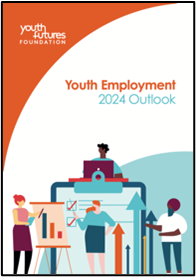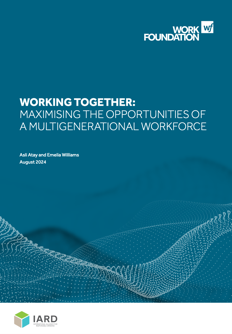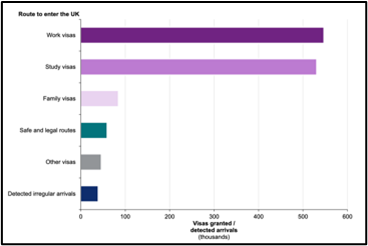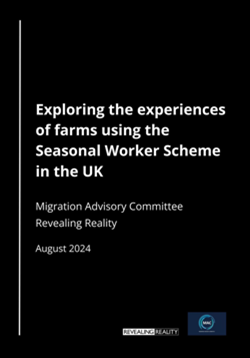
September's Market Insights
11 Sept, 20246 minsWelcome to the September edition of Meridian Insights. MPs are returning to Parliament after...

Welcome to the September edition of Meridian Insights. MPs are returning to Parliament after the election and the summer recess, and we’re sure it’s going to be a busy session.
The Commons Leader, Lucy Powell MP, has unveiled a ‘packed legislative agenda’ including bringing rail operators into public ownership and establishing a fiscal lock to deliver economic stability.
The government is expected to focus on improving workers’ rights during September, and here at Meridian, we will review the details of these proposals and provide feedback accordingly.

Labour Market Overview
The latest ONS Labour Market Overview shows that:
- UK unemployment rate decreased slightly to 4.1%, 1.437 million people unemployed
- Unemployment amongst young people remains high, particularly the youngest age group (aged 16-17 = 21.7% / aged 18-24 = 13.3%)
- Employment rate increased slightly to 74.8%, 33.23 million people employed
- UK economic inactivity rate decreased slightly to 22.9%, still higher than 12 months ago
- 9.298 million people are economically inactive, an increase of 160,000 on last year and 747,000 higher than pre-pandemic levels
- Vacancies fell again to 857,000, the 26th period fall, down 42,000 from previous quarter, but still above pre-Covid levels. This means there were 1.6 unemployed people per vacancy in May to July 2024, down from the previous quarter
- Payrolled employees for August 2024 were 30.3 million, a rise of 0.4% compared to last year. This is a rise of 122,000 over the last 12 months. 1.31 million higher than pre-pandemic levels
- Annual growth in regular pay without bonus increased by 5.1% (this was the lowest growth since 2022) and with bonus by 4.0%. Adjusted for inflation, annual growth regular pay was 2.2% and total pay was 1.1%
- Claimant count increased by 23,170 on the month and 255,800 on the year to 1.792 million. This is the measure of those receiving benefit principally due to being unemployed
- Redundancies increased to 2.9 per thousand employees, slightly lower than last year
- 42,000 working days were lost because of labour disputes in July, down from 98,000 in the previous month
News

The Youth Employment Outlook 2024 found that 1 in 8 young people in the UK are out of work, education or training. In addition, young people perceive that finding a job has become more difficult, but many remain optimistic about the future. 16 to 25 years olds face significant barriers to entering the world of work and the most common is a lack of training, skills and work experience. A third of young people report having a mental health condition and 85% believe this affects their ability to find work.

The HR Director reports ONS data revealing the Office for National Statistics (ONS) data reveals that the number of part-time self-employed workers aged 65 and over increased by 28.7% in the second quarter of 2022, rising from 264,761 to 340,779. Their average hours worked mainly fell within 16 to 30 hours per week. This increase underscores the growing importance of self-employment as a means of sustaining income in later life. It also reflects broader demographic and economic trends, as more people live longer and work beyond the traditional retirement age.

Many UK graduates are struggling to find their first job after university leading to many having to work for minimum wage. According to a report in the Guardian, 61% of those who graduated in 2022 have gained full-time work 15 months later – but many of them will find non-graduate work only. According to the Office for National Statistics, last year just 60.4% of graduates living in England aged 21-30 were in “high-skilled” work, while 26.4% of this group were in medium or low-skilled employment and 5.5% were unemployed.

The latest LHH Outplacement and Career Mobility 2024 Report found that 21% of UK businesses have undertaken layoffs and 30% are considering them with 42% of workers being concerned that they may be laid off. The UK has one of the lowest levels of redeployment programmes with only 26% of businesses having one in place.

The British Chamber of Commerce (BCC) have published their latest quarterly economic update. It has upgraded growth expectations for 2024 following an improved picture so far this year. The forecast for 2025 remains unchanged, with a minor upward revision for 2026. The average unemployment rate is expected to be 4.3% in 2024, rising slightly next year to 4.4%, before easing to 4.1% in 2025. That is a slight decrease from last quarter’s forecast. However, youth unemployment will remain high, with the percentage out of work forecast to be 13.3% this year, 13.4% in 2025 and 13.1% in 2026.

The Centre for Economics and Business Research (CEBR) published its Economic Outlook for Q3 2024. Key findings:
- The UK grew by 0.6% in Q1 2024
- Economy is expected to continue to grow this year and into next year
- The reason for high wage growth is a tight labour market despite a recent uptick in unemployment. Skills shortages remain acute, with vacancies still above their pre-pandemic level.

Great Place to Work has published its latest report The state of employee wellbeing in the workplace 2024. Key findings:
- 55% of employees were thriving in their overall wellbeing at work
- 55% look forward to coming to work
- 3 in 5 feel that they are encouraged to balance work and personal life
- 56% report fair pay for them and their co-workers
- Manufacturing and production sectors are at the bottom of their Wellbeing Index
- 53% say that the demands of their job cause them excessive stress

The Work Foundation’s report Working Together: Maximising the opportunities of a multigenerational workforce found that three quarters (73 per cent) of senior business leaders have multiple generations in their workplace, yet there is a ‘say-do gap’ on how employers support managers to create inclusive workplaces.
The report also revealed that while many organisations see the value of a multigenerational workforce, two in five (39 per cent) business leaders reported it leading to difficulties in communication and collaboration.
For the first time in history, the report highlighted that there are four generations working together, from ‘baby boomers’ to Gen Z.
UK Immigration Policy

The government has published the latest immigration statistics. In the year ending June 2024, 1.16 million visas were granted for work, study or family reasons (including dependants). In the same period, 38,784 people were detected arriving in the UK by irregular routes. 5,167 people were granted permission to come to the UK by safe and legal routes such as the Ukraine and BN(O) schemes, refugee resettlement and family reunion and 45,886 were granted ‘Other’ visas.
Under the EU Settlement Scheme, there have been 8.1 million EU Settlement Scheme (EUSS) applications made by 6.3 million people since the scheme launched up to 30 June 2024. 7.9 million applications have been concluded since the scheme launched up to 30 June 2024, of which 50% (3.9 million) were granted settled status, 36% (2.8 million) were granted pre-settled status and 15% had other outcomes.

The number of employers who had their skilled worker visa sponsorship licence cancelled in the second quarter of 2024 reached 1,023, compared to just 519 in the first quarter, according to the latest Home Office data.
Of the employers who lost their sponsorship licence in the second quarter, 524 had it suspended, while 499 were revoked. These figures mark a dramatic increase compared to the second quarter of 2023, when just 89 employers had their licence suspended and 28 had it revoked.
Over the past few years, UK Visas and Immigration (UKVI) has made it clear that enforcing sponsor compliance is their top priority to curb perceived abuses of the sponsor licence system.

The Migration Observatory published its briefing on Work visas and migrant workers.
Key findings:
- Non-EU work visa grants grew strongly between 2021 and 2023, with the sharpest growth in the Skilled Worker visa category. Visa grants to some groups of Skilled Workers fell sharply in early 2024 following a series of policy changes
- The health and social care sector accounted for over 60% of Skilled Worker visa grants in the year ending March 2024, and was largely shielded from 2024 increases in salary thresholds
- There is widespread qualitative evidence of exploitation of migrant workers. The risks are higher when migrants’ visas are tied to their employers or where their work is low-paid or isolated
- By the end of 2023, students had started to stay in the UK longer after their studies, compared to pre-Brexit trends
- Indian citizens were the largest recipients of work visas in 2023, followed by citizens of Nigeria

The Home Secretary, Yvette Cooper has announced a major surge in immigration enforcement and returns activity, to make sure that immigration and asylum rules are respected and enforced. This includes sanctions to be taken against unscrupulous employers who hire workers illegally.
Seasonal Workers’ Scheme

The previous government confirmed the extension of the Seasonal Worker visa route to 2029. In 2025, there will be a total of 43,000 visas in horticulture (2,000 less than 2024 and the extra 10,000 has been removed) and 2,000 in poultry. The new Government has so far not announced any changes to this and they have yet to respond to the Migration Advisory Committee (MAC) Seasonal Worker Visa Review.

The Migration Advisory Committee (MAC) published its latest report Exploring the experience of farms using the Seasonal Worker Scheme in the UK. Key findings:
- Users of the scheme view it as a critical source of labour
- The scheme was viewed as mutually beneficial to workers and farms
- Some farms were going beyond the base line expectations of the scheme to retain workers and incentivise them to return
- Some farms were not reliant on the scheme and some actively avoided it
- Some elements of the scheme farms found challenging e.g. 6-month cool off period did not always align to crop seasons














